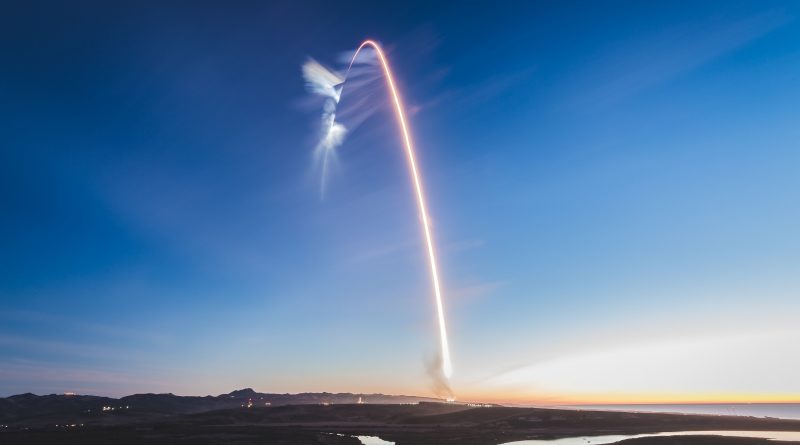Falcon 9 Closes Record Year with 4th Iridium Launch, 1st Stage Disposal Gathers Flight Data
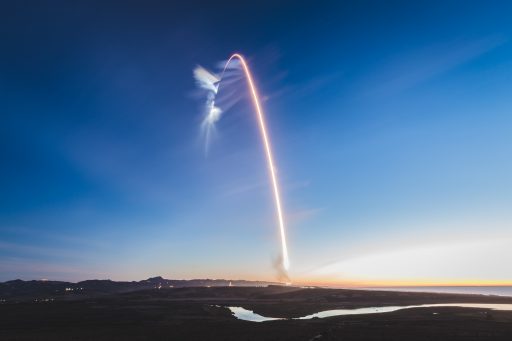
A flight-proven Falcon 9 rocket lit up the evening sky over California’s Vandenberg Air Force Base on Friday to deploy ten more Iridium-NEXT communications satellites to take the largest satellite constellation upgrade ever undertaken across the halfway point to the finish line. Conducting its 18th and final mission of 2017, SpaceX’s Falcon 9 closed the year with a high when deploying all ten Iridium satellites into their target orbit over one hour after launch and underlining a perfect year for the California-based launch services provider.
The 70-meter tall Falcon 9 rumbled off from Vandenberg at 5:27:34 p.m. local time on Friday, 1:27:34 UTC on December 23 – just 72 seconds after a Japanese H-IIA rocket took flight from the other side of the Pacific Ocean, soaring into orbit with the GCOM-C Climate Observatory and SLATS Super-Low Altitude Test Satellite. The last time two orbital space launches occurred just a minute apart was at the dawn of the space age when, on August 18, 1960, a Thor-Agena and Thor-Ablestar took off from opposite coasts of the U.S., though only one managed to achieve orbit.
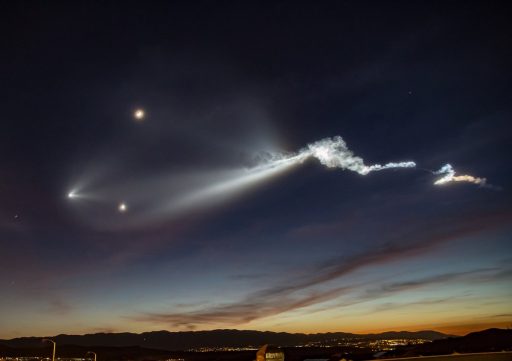
Sporting no landing legs but a sooty interstage with grid fins, Falcon 9 thundered into clear afternoon skies over California as it swung to the south powered by its nine Merlin 1D engines. The first stage, having previously supported the Iridium-2 mission in June of this year, fired for just over two and a half minutes before dropping away from the stack for some post-separation experiments before finding a watery grave in the Pacific Ocean. Stage 2 fired its MVac engine for six and a half minutes to achieve a preliminary orbit followed by half an orbit of passive flight and an eleven-second re-start to circularize the orbit and one by one drop off its ten passengers.
Friday’s launch further cemented Falcon 9’s position as the most-flown launch vehicle of 2017, outperforming Russia’s Soyuz workhorse that launched 15 times this year and flying more missions than China’s entire Long March rocket family, even with two more Chinese launches on the books before the year turns. Falcon 9 is also the primary contributor to the U.S. becoming the leading space nation for the number of launches performed this year, a rank it hasn’t held on its own since 2003.
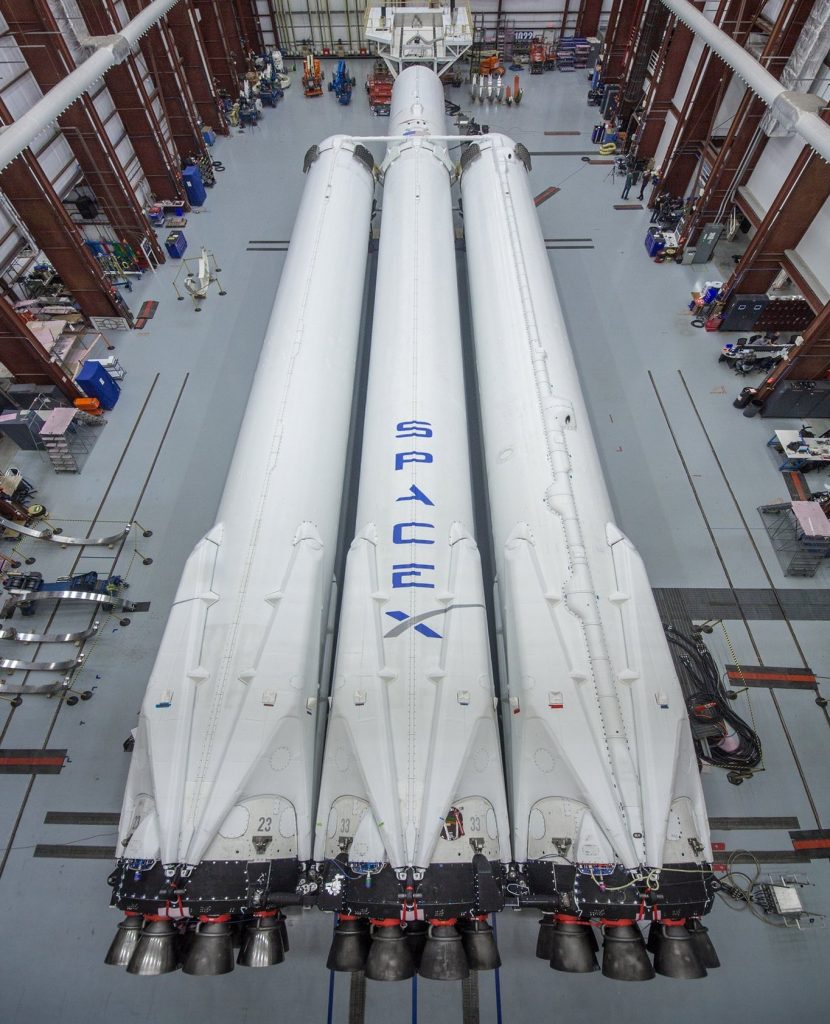
SpaceX had made a steady launch cadence, a failure-free year and initial Falcon 9 re-flight missions their goals for 2017 as the company begins to recuperate funds spent on the development of its re-usable rocket technology. 2017 was nothing short of impressive as the company put check-marks behind all three major goals – flying more often than any other launch provider, setting a perfect record for launches and first stage recoveries and re-flying five Falcon 9 boosters – representing over a quarter of all SpaceX missions performed this year.
With 2018 on the horizon, SpaceX is looking at another milestone-filled year – starting out with the highly anticipated maiden mission of the Falcon Heavy rocket after company leader Elon Musk posted the first photos of the fully assembled vehicle and its payload this week.
Working to elevate re-use closer to a routine element of flight operations, SpaceX hopes to bring the Falcon 9 Block 5 version to the launch pad in the first quarter of the year, featuring provisions for easy turnarounds between missions and a service life of at least a dozen flight cycles. Also set for 2018 is the debut of SpaceX’s crewed Dragon spacecraft, set for an uncrewed demonstration mission to the International Space Station in the second half of the year, to be followed by a two-week crewed mission (likely in early 2019 per current ISS planning schedules).
SpaceX’s year-closing mission called for the next group of ten satellites of Iridium’s second-generation constellation to be lifted into a 625-Kilometer orbit, marking the fourth of eight planned Falcon 9 missions in support of Iridium-NEXT to deploy a total of 75 satellites.
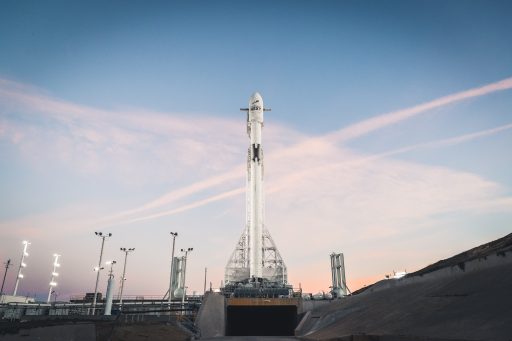
It was the first Iridium launch to use a ‘flight-proven’ – or previously used – first stage after Iridium, mirroring a move by NASA, agreed to modify an existing contract that originally called for new boosters to be used.
Both, NASA and Iridium, worked with SpaceX since the early months of 2017 to review booster refurbishment procedures and component lifetime assessments for multiple mission cycles. Through extensive insight into their re-flight data, SpaceX was able to convince NASA and Iridium that flying on used boosters adds minimal to no risk to overall mission success – an assessment shared by launch insurance providers as flying on previously used Falcon 9 vehicles comes without an increase in insurance premiums.
The primary driver behind the decision to opt for flight-proven stages on Iridium’s part was the schedule assurance provided by flying on existing hardware since production of new Falcon 9 first stages had become the bottleneck in SpaceX’s efforts to step up its launch cadence. Iridium – hoping to have all 75 NEXT satellites in orbit by the end of August 2018 – therefore decided to book its next two missions on flight-proven Falcon 9 rockets to keep on schedule and avoid production-related delays.
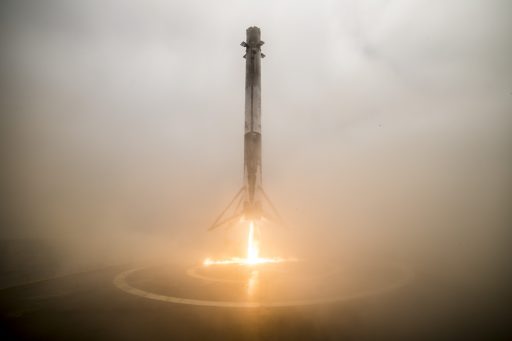
The booster called up for Friday’s mission was Core 1036 that first flew on June 25, 2017 when sending the second group of Iridium-NEXT satellites toward orbit before landing atop SpaceX’s “Just Read The Instructions” Drone Ship and returning to SpaceX’s factory via the Port of Los Angeles. B1036 is a Block 3 booster, an earlier generation of the Falcon 9 FT first stage that has already been succeeded by Block 4, an intermediary version with some structural changes & bolted engine section, before the ‘frozen’ Block 5 design is introduced.
Since Block 3 boosters lack the re-use upgrades of later generations, their refurbishment is more invasive and time-consuming and their structure is only certified for a few re-flights. To that end, SpaceX opted to fly Friday’s mission in an expendable configuration with the first stage finding a final resting place in the Pacific Ocean, traditional “old-space” style.
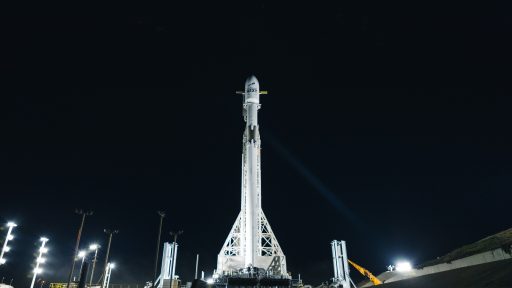
However, photos of the Falcon 9 rocket as it rolled to the launch pad on Thursday showed B1036 was not sporting landing legs – as would be expected for an expendable launch – but did have grid fins which are usually not present for expendable missions, potentially indicating the vehicle was to complete some post-separation testing to further SpaceX’s knowledge on booster flight characteristics, possibly going through some borderline flight environments not possible on an operational recovery mission.
Based on the first stage burn time, the booster had in excess of thirty metric tons of leftover propellants at the point of separation, providing plenty of maneuverability for testing.
Friday’s launch marked Falcon 9’s first re-use mission from Vandenberg and Core 1036 was the first of SpaceX’s flight-proven fleet not to be recovered a second time. It was the first Falcon 9 launch from Vandenberg flying in expendable mode since the debut mission of the Falcon 9 v1.1 vehicle in 2013.
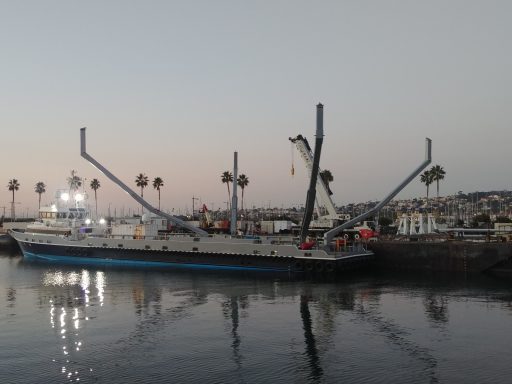
Despite not going for a booster recovery on Friday, SpaceX continued plowing ahead with its re-use efforts on the payload fairing side – debuting a new four-arm contraption on a ship named “Mr Steven” that was in place near Guadalupe Island, off the coast of Mexico where the fairing halves were expected to land, possibly spanning a large net between the arms to catch the fairing half.
Riding atop the 46th Falcon 9 rocket were Iridium-NEXT Satellites 31 to 40, part of a $2.9-billion replacement effort undertaken by Virginia-based Iridium Communications to replace the entire first-generation constellation that had been in operation since the late 90s and early 2000s. The Iridium constellation, operating satellites in six orbital planes at an altitude of 780 Kilometers, is the only satellite communications system that can offer truly global communications – routing voice and data packets through space-to-ground and inter-satellite links, currently serving nearly a million customers spread across a variety of sectors including the U.S. military, oil & gas companies, transportation firms and aviation / maritime operators.

When the first Iridium-NEXT satellites took flight in January, the operational constellation was in dire need of replacement since no more spares were available in orbit to patch gaps left by failures on the aging satellites. Friday’s launch took the constellation upgrade across the halfway point with another four launches to go – three with ten satellites and a ride shared between five Iridium birds and two GRACE-FO gravity-sensing satellites in March.
Iridium awarded the contract for the Iridium-NEXT constellation to Thales Alenia space, tasked with building 81 NEXT satellites – 75 of which are headed to orbit to replace the 66-satellite constellation and pre-position nine spares to be ready to take over at short notice in case an active satellite runs into problems. Orbital ATK was sub-contracted for the integration of the Iridium-NEXT satellites, establishing an assembly line at the company’s Arizona facility.
Each member of the constellation weighs 860 Kilograms at launch and hosts a powerful communications terminal covering a 4,700-Kilometer footprint on the ground with its L-Band phased array antenna to accept/send data packets which are then relayed to their destination through Ka-Band cross links between neighboring satellites.
>>Iridium-NEXT Satellite & Constellation Overview
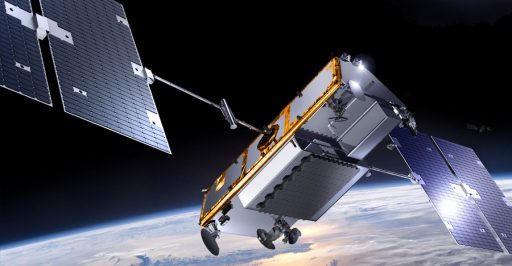
Iridium-NEXT satellites also facilitate hosted payloads dedicated to tracking global ship traffic via the Automatic Identification System and air traffic via the ADS-B transponders installed on commercial aircraft. The layout of the Iridium constellation for global communications coverage also enables the hosted payloads to collect real-time data on ship and aircraft movements on a global scale.
Working toward an afternoon liftoff on Friday, Falcon 9 took its vertical launch position atop SLC-4E around 8 p.m. local time on Thursday and entered countdown operations the next morning with power-up and systems checks. Awarded a clean bill of health, Falcon 9 pressed into its expedited tanking sequence at T-70 minutes, first receiving some 155 metric tons of chilled Rocket Propellant 1 followed by loading around 360 metric tons of sub-cooled Liquid Oxygen into the two-stage rocket.
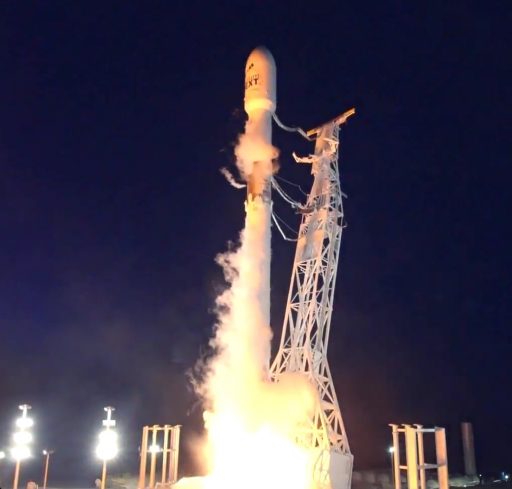
While propellant loading was still in full swing, Falcon 9 began chilling down its nine Merlin 1D engines, the Strongback structure retracted from the venting vehicle and the rocket went through final hydraulics checks before making its transfer to internal power. Flight levels on all tanks were called out by T-2 minutes and Falcon 9 was handed control of the count with one minute to go, heading into tank pressurization before firing up its engines at T-3 seconds.
Soaring off the pad at 1:27:34 UTC with a thrust of nearly 700 metric tons, Falcon 9 was tasked with dispatching the Iridium-NEXT satellites into Plane 2 of the six-plane constellation. Rising into clear skies, Falcon 9 pitched onto a southerly heading and pushed through the sound barrier just over a minute into the flight and throttled back its engines briefly around T+78 seconds when hitting Maximum Aerodynamic Pressure.
Continuing to fire on all cylinders, the first stage burned 2,450 Kilograms of propellant per second, shutting down its engines two minutes and 33 seconds into the flight – seven seconds later than for previous Iridium missions that featured drone ship landings. As a result, velocity at MECO for Friday’s launch was 2.06 Kilometers per second, around 130m/s higher than for a recovery mission, thus relaxing margins for the second stage and allowing a different design to be used on the upper stage’s second burn later on.
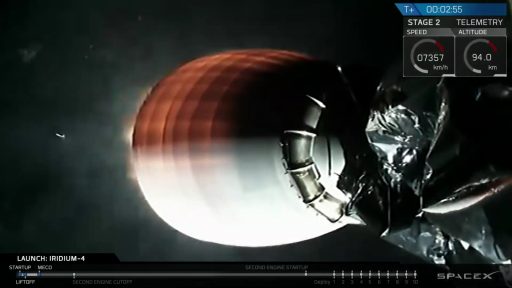
The two stages parted ways at T+2 minutes and 36 seconds by means of four pneumatic pushers and the second stage fired up its 95,000-Kilogram-force MVac engine two seconds later on a burn of six minutes and 22 seconds to push the stack into orbit.
For the first stage, staging marked the start of its secondary mission, having preserved around 36 metric tons of propellant for the usual sequence of a partial boost-back maneuver, entry burn and a landing burn toward a soft splashdown in the Pacific. SpaceX did not go into detail on the specific objectives of the first stage post-separation test.
Pushing toward orbit, the second stage separated the 13-meter long payload fairing halves three minutes and 11 seconds into the mission when crossing 115 Kilometers in altitude. SpaceX has been silent on its fairing recovery efforts, though has said that progress was made on a number of recent flights in bringing back fairing halves to soft splashdown landings in the ocean and “Mr Stevens” may be the company’s solution for intact returns without touching salt water or having to go through the complexity of an airborne recovery.
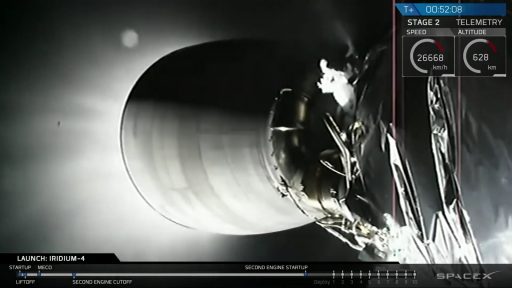
According to Elon Musk, the fairing halves each have their own thruster systems to stabilize from their tumble after separating from the ascending rocket and enter a favorable attitude for re-entry at a speed in excess of 2.5km/s. Once back in the dense atmosphere, the fairing halves deploy auto-steering chutes that have the ability of maneuvering the 5.2 x 13-meter fairing halves to a precise landing location – presumably where Mr Stevens was holding position.
Closing out its first burn right at the T+9-minute mark, the Falcon 9 second stage arrived in an elliptical Parking Orbit peaking around 625 Kilometers in altitude and started a 43-minute coast phase to climb up to apogee so that the second burn could serve as circularization maneuver. Approaching the island of Madagascar from the south, the second stage fired up again 52 minutes and 8 seconds into the flight for a four-second burn to reach a circular orbit by accelerating by 123 meters per second.
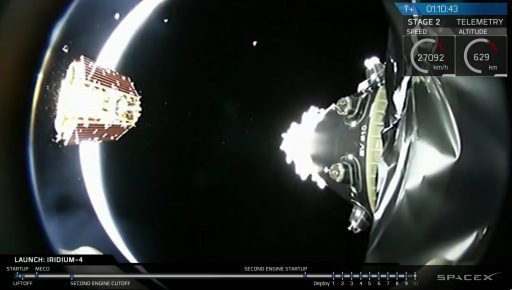
Having reached the desired orbit, the second stage initiated the separation sequence 57 minutes and five seconds into the flight with one Iridium-NEXT satellite pushing off the two-tier adapter every 100 seconds. SpaceX Launch Control called out separation events as they happened in real time and applause erupted when the tenth satellite departed the launch vehicle, confirming a 100% success for payload deliveries in 2017.
In the hours after launch, the ten new additions to the Iridium constellation will spread their wings by deploying their power-generating solar arrays, complete initial health checks and begin communicating with ground stations to head into commissioning. Of the ten satellites launched on Friday, eight will be boosted from their 625km checkout orbit into Plane 2 of the Iridium constellation while the remaining two are looking at a multi-month drifting campaign to reach Plane 1 where they will begin operations.

